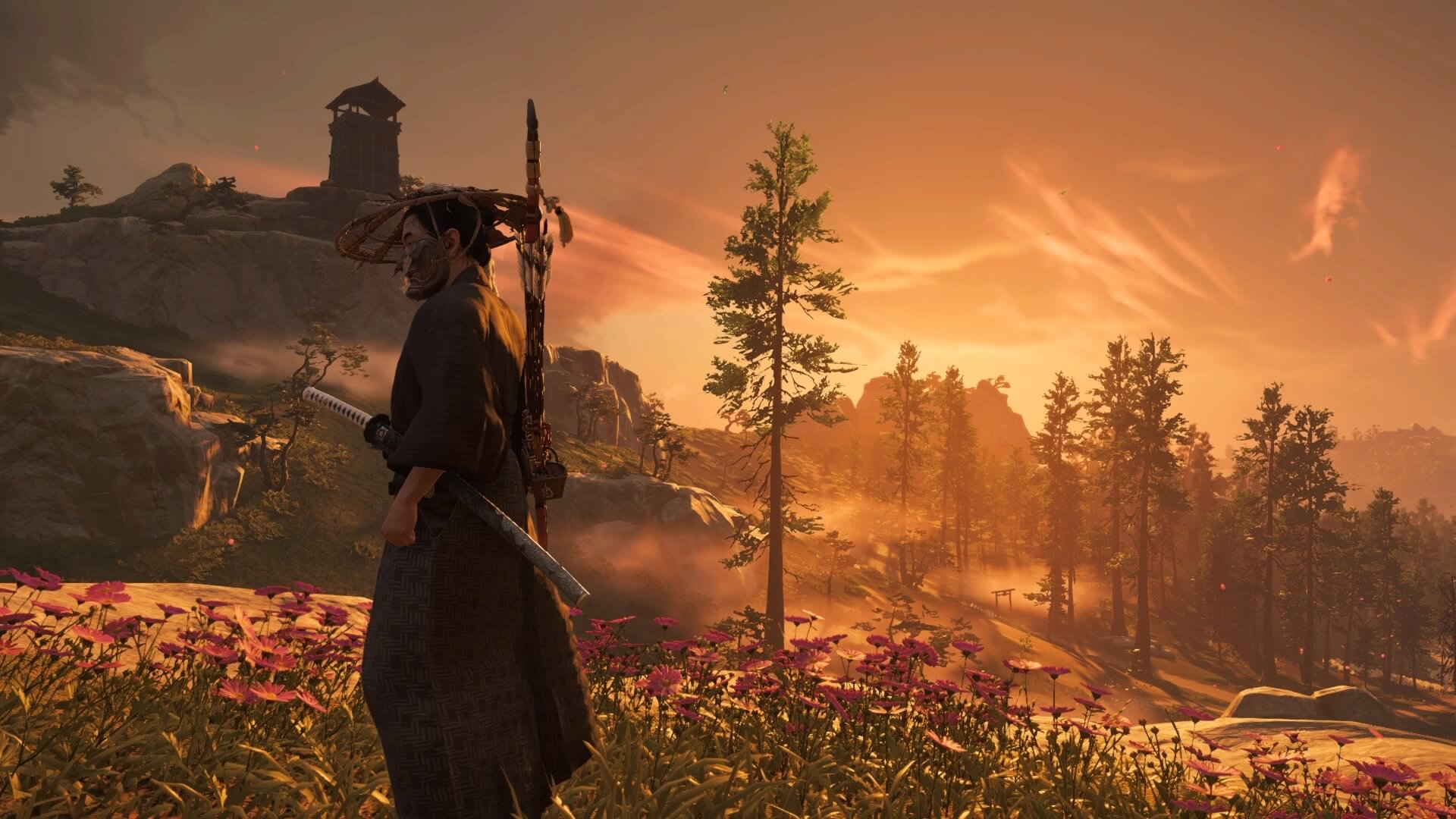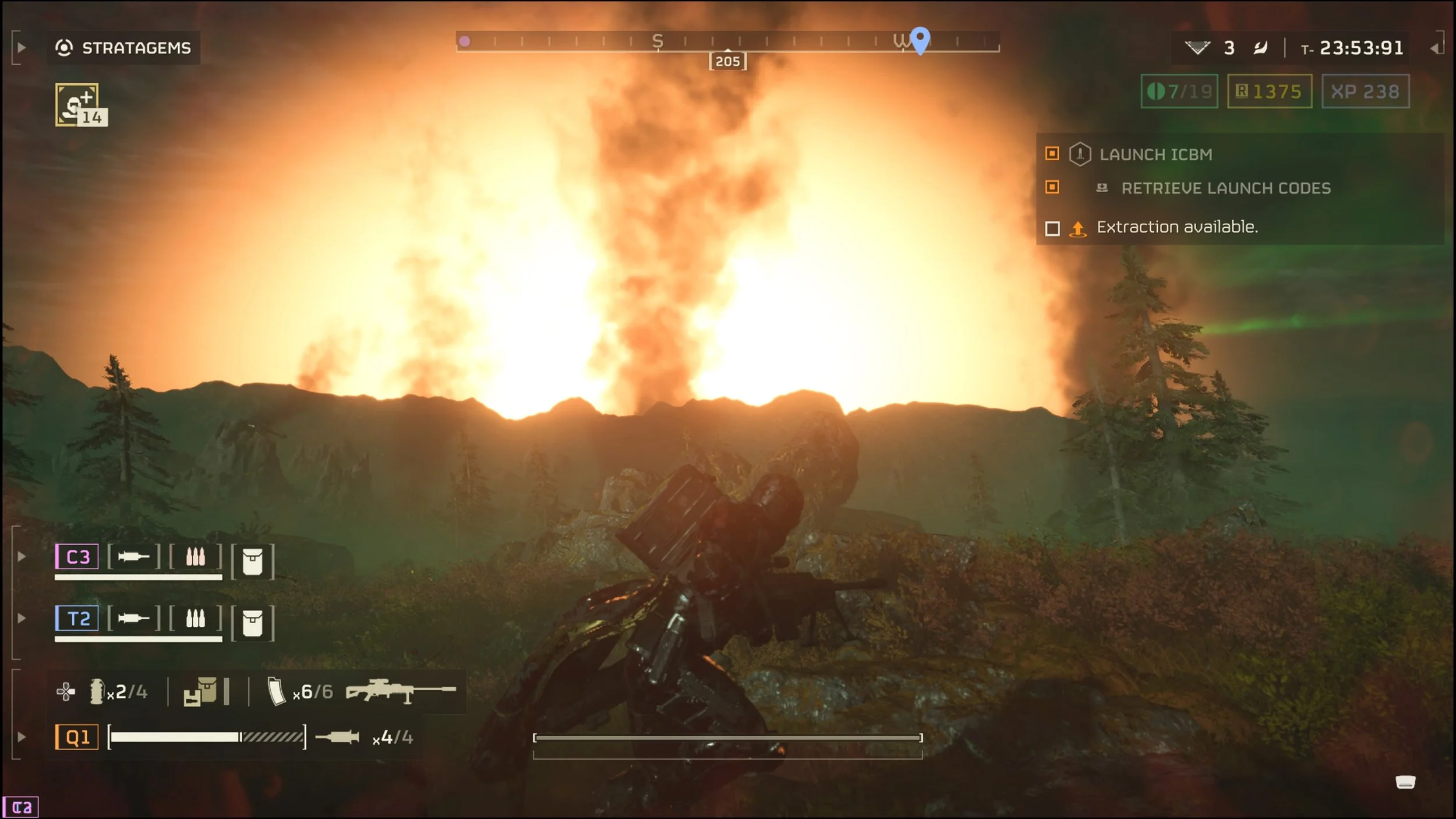Ghost of Tsushima Review - You Want It Darker
/As an earnest, respectful tribute to jidaigeki dramas and the films of Akira Kurosawa, Ghost of Tsushima fares well enough. It creates a fictionalized account of the Mongol Invasion and weaves the tale into the most videogamey of videogame things – an open-world sandbox filled with straw-hat wearing ronin, mischievous foxes, hot springs, and meditative haiku. It’s easily the most ambitious output from Sucker Punch Productions to date.
Ghost of Tsushima casts players as Jin Sakai, a samurai warrior who joins his uncle Lord Shimura and the rest of the samurai inhabiting the island of Tsushima in fending off the first Mongol invasion of Japan. Things do not go well, as he and his noble brethren are wiped out at Azamo Bay. Jin emerges as the massacre’s sole survivor and begins plotting his crusade to single-handedly drive back the Mongols and rescue his uncle from the ruthless general Khotun Khan.
But while Ghost of Tsushima offers decent thrills through its combination of demanding sword combat and stealth murder tactics, it is undermined by its refusal to innovate on the broader trappings of open-world games. Complicating matters is its unwavering commitment to a dark, serious tone devoid of levity and a representation of Japanese history that feels limited by a tellingly gaijin compulsion towards reverence.
Beauty and the Moonlight Overthrew You
As Sakai, you’ll travel the vast countryside of Tsushima to recruit allies for your cause. Amidst the ancient landmarks, peaceful farmsteads, and humble villages, you’ll find the Mongol invaders who threaten the safety of the island. Like Sucker Punch’s previous offering, Infamous: Second Son, the world of Ghost of Tsushima is a sight to behold. The pampas grass sways in the wind, sunlight and moonlight alike shimmer off bodies of water and are divided by the many trees.
What undoes the visual magic of Ghost of Tsushima are the little details. Combat animations can look janky – there’s an unnaturalness to the way one movement flows into another – and cut-scenes vary in quality. Some look as if all the time in the world was spent polishing them for possible use in promo trailers, and others are stiff and poorly served by a lack of bespoke lighting conditions.
There’s a sense that the scope of Ghost of Tsushima far exceeded Sucker Punch’s ability to perfect every single piece of content needed for it. Sure, not every asset in a major video game is given the deluxe treatment – main characters get more attention to model work and animation than enemy minions, non-hostiles, and civilians – but the gap in quality here is so apparent, one wonders if the game needed to be reined in, or to have simply spent more time in the oven.
This isn’t to suggest that the marketed visuals have been dishonest (outside the obvious fact that marketing footage tends to be curated and taken from the PS4 Pro), but that there exists a disparity of quality between the majestic open-world and the weak staging of many of the game’s minor cutscenes and inelegant transitional animations.
To save Tsushima, Jin embraces tactics that would be considered dishonorable. By using stealth and terror, Jin comes into conflict with the ideals of the Bushido code.
I’m Cold As A New Razor Blade
The most fully-realized aspects of Ghost of Tsushima are its combat and stealth mechanics. The game’s story is anchored around the idea that Jin, driven as he is towards saving the island and avenging the fallen, is drawn to regard tactics that would be considered dishonorable by the Bushido code. By using stealth and terror, Jin comes into conflict with both his own ideals and those of his uncle, a true samurai traditionalist.
Mechanically speaking, that means as “your legend grows” – the game’s flavor text for leveling up – you’re able to invest points into various parry and evasion skills, Samurai stances, and Ghost tactics. Stances are crucial to diversifying your ability to handle different enemy types, while Ghost tactics expand your options in stealth and distraction. While it’s tempting to go with a purist build, it’s my humble belief that you’ll need a little bit of both to succeed.
Initial reports had it that Jin’s conflicting choices would form the backbone of a morality system comparable to the Karma system from Sucker Punch’s Infamous series; that’s not the case in Ghost of Tsushima’s final release, which makes it clear that Jin’s personal transformation into the Ghost and the ethical struggle that accompanies it forms the game’s narrative and thematic spine.
Which is just as well, as a game like Ghost of Tsushima would be poorly served by choices that burden the player with narrative responsibility. There’s still a pang of guilt to be felt when you make your first dishonorable kill, and a sense of shame kicks in when Jin starts using fear and terror against the Mongols, but it’s also nice to be able to trust the story to unfold on its own terms. Ghost of Tsushima gives you the freedom to stalk, murder, poison, and terrify your foes to your heart’s content.
Permission to Murder and to Maim
When you’re not stalking in the tall grass gutting unwary Mongols in the dark, you’ll be hacking and slashing away in sword-based combat. Ghost of Tsushima is a samurai fantasy after all. The combat is fairly sophisticated and demands greater mastery than most other open-world games. This isn’t to say that Ghost of Tsushima is a Soulsborne game, but it does share DNA with games like Nioh and The Witcher 2: Assassin of Kings.
Between switching stances to handle a variety of enemies, staggering them to open them up, and managing several of them at a time with an expert dodge and perfectly timed parry, Ghost of Tsushima asks you to bring Jin’s samurai skills to life. There’s a sense of satisfaction that can’t be beat when you execute multiple tactical maneuvers in succession and slay multiple foes without taking a hit.
Ghost is committed to respecting the jidaigeki genre and refuses to question the Imperial hierarchy of thirteenth-century Japan. It lacks levity, irony or self-awareness.
But if I’m to be truthful, the reality for me was less perfect. Maybe I’m ill-suited to the kind of expert timing a game like Tsushima demands, but I found myself struggling with the game’s controls. I felt like I kept overestimating the reach of my sword or miscalculating my enemies’ timing. I’m inclined to blame my own age catching up to me, but I also happen to manage Star Wars Jedi: Fallen Order and The Surge fine.
In any case, my feeling was that Ghost of Tsushima’s timing windows and hit correction were either erratic or unforgiving, or that the combat controls felt slippery and sluggish, depending on the situations at hand. Take my observations with a grain of salt, though. Maybe some players can connect with the game’s combat more easily, but the fact remains that one’s mileage may vary when it comes to controls and timing.
Just a Shining Artifact of the Past
Ultimately, what dampened my appreciation of Ghost of Tsushima was the inherently conservative nature of the whole experience. Sucker Punch Productions is so committed to respecting the jidaigeki genre (and by implicit extension, Japanese culture itself) that it refuses to question the Imperial hierarchy of thirteenth-century Japan.
And while it would be a bit much to expect a game to deconstruct the historical institution that informs it, Sucker Punch opts out of leavening their story with nuance and texture. This, coupled with the lack of any innovation on the open-world formula, means that Ghost of Tsushima is simply a glossy, self-serious take on the samurai fantasy. Save for one quest giver, there is simply no levity or humor of the kind found in games like Assassin’s Creed Odyssey or Sleeping Dogs.
As Jin starts to lean deeper into his Ghost persona, the game becomes only more resolute in its grimness. It’s not quite The Last of Us Part 2 or even The Order: 1886 in terms of dour joylessness, but it suffers for its dark monotony. Ghost of Tsushima is a serviceable experience, for despite its countryside splendor and rewarding progression, it falls short of being special or remarkable.
7/10
Highlights
PRO: Excellent world visuals with environmental lighting a notable standout
CON: Inconsistent quality of character models and erratic cutscene direction
PRO: Robust progression system with plenty of options for stealth and combat
CON: Controls can feel fiddly and unreliable with some movements feeling janky
CON: Incredibly self-serious story lacks narrative levity, irony or self-awareness
What I’ve Played
50 hours of the game’s single-player narrative campaign
24 side quests, dubbed Tales of Tsushima and 4 Mythic Tales
66 exploration rewards and 65 artifacts found
[This review is based on a review code provided by Sony PlayStation Asia.]



















Stellar Blade’s potential was clear, but as its ambitions expanded into something greater, it lost focus. As soon as Stellar Blade tries to bring everything together, it merges into a single figure that looks deformed and uneven. The quality is unquestionable but it wasn’t the final product I was slowly building in my head as I went through the game’s first half.